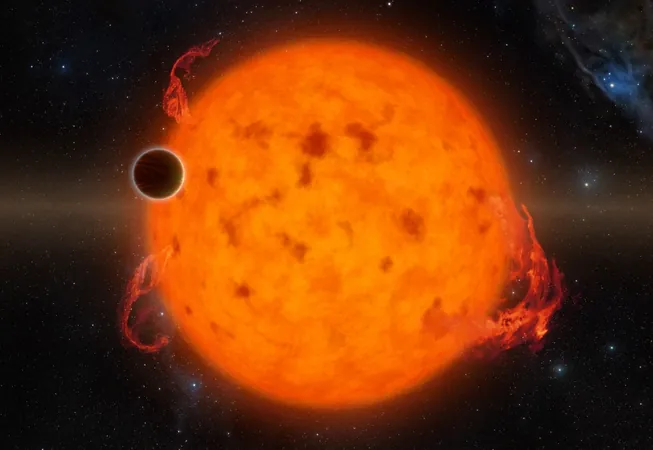
Astronomers Stunned by Discovery of Massive Planet Around Tiny Star
2025-06-08
Author: Li
A Cosmic Surprise: A Giant Planet Circling a Tiny Star
In a jaw-dropping twist of cosmic fate, scientists have unearthed a gigantic gas planet orbiting a diminutive star known as TOI-6894, which packs just 20% of our Sun's mass. This groundbreaking discovery, reported in the journal Nature Astronomy, challenges the long-held belief that tiny stars can't host massive planets.
The Record-Breaking Discovery
TOI-6894 is now the smallest star observed to host a gas giant. The newly found planet, named TOI-6894b, boasts a radius slightly larger than Saturn, though it weighs in at only half the mass. It zips around its star in just over three days, showcasing an incredibly unique orbital pattern.
Diving Deep into the Data
The planet was identified using data from NASA's TESS space telescope, which scrutinized over 91,000 low-mass red dwarfs. Follow-up observations from ground-based telescopes, including the renowned Very Large Telescope in Chile, confirmed the planet's existence.
Rethinking Planet Formation Theories
Researchers are electrified by the implications of this discovery. Daniel Bayliss from Warwick University highlighted how such a star hosting a giant planet significantly alters our estimations of giant planets within the Milky Way. Fellow researcher Vincent Van Eylen from University College London emphasized the mystery: "We don't really understand how a star with so little mass can form such a massive planet!"
The Mystery of Planetary Creation
Traditionally, planet formation is explained through the core accretion theory, where a star’s surrounding gas and dust create a core that attracts more materials, eventually forming a gas giant. However, this theory struggles to account for TOI-6894b due to the low mass of its star, which likely lacks enough material to create such a planet. An alternative idea suggests that gravitational instability in the star's protoplanetary disc could lead to planet formation, but this too fails to clarify the planet's existence.
A Cold Giant in the Cosmos
Adding to the intrigue, TOI-6894b is remarkably cool compared to other exoplanets. While many gas giants, dubbed "hot Jupiters," roast at temperatures exceeding 1,000 degrees Celsius, this newfound giant keeps it chill at under 150 degrees. This lower temperature may enable atmospheric analyses to spot ammonia, potentially the first detection of this compound in an exoplanet's atmosphere.
What's Next?
The James Webb Space Telescope is slated to focus on TOI-6894b in the coming year, promising to unveil further mysteries of this extraordinary planet. This discovery not only enriches our understanding of planetary systems but also pushes the boundaries of our models regarding how planets form in our universe.




 Brasil (PT)
Brasil (PT)
 Canada (EN)
Canada (EN)
 Chile (ES)
Chile (ES)
 Česko (CS)
Česko (CS)
 대한민국 (KO)
대한민국 (KO)
 España (ES)
España (ES)
 France (FR)
France (FR)
 Hong Kong (EN)
Hong Kong (EN)
 Italia (IT)
Italia (IT)
 日本 (JA)
日本 (JA)
 Magyarország (HU)
Magyarország (HU)
 Norge (NO)
Norge (NO)
 Polska (PL)
Polska (PL)
 Schweiz (DE)
Schweiz (DE)
 Singapore (EN)
Singapore (EN)
 Sverige (SV)
Sverige (SV)
 Suomi (FI)
Suomi (FI)
 Türkiye (TR)
Türkiye (TR)
 الإمارات العربية المتحدة (AR)
الإمارات العربية المتحدة (AR)